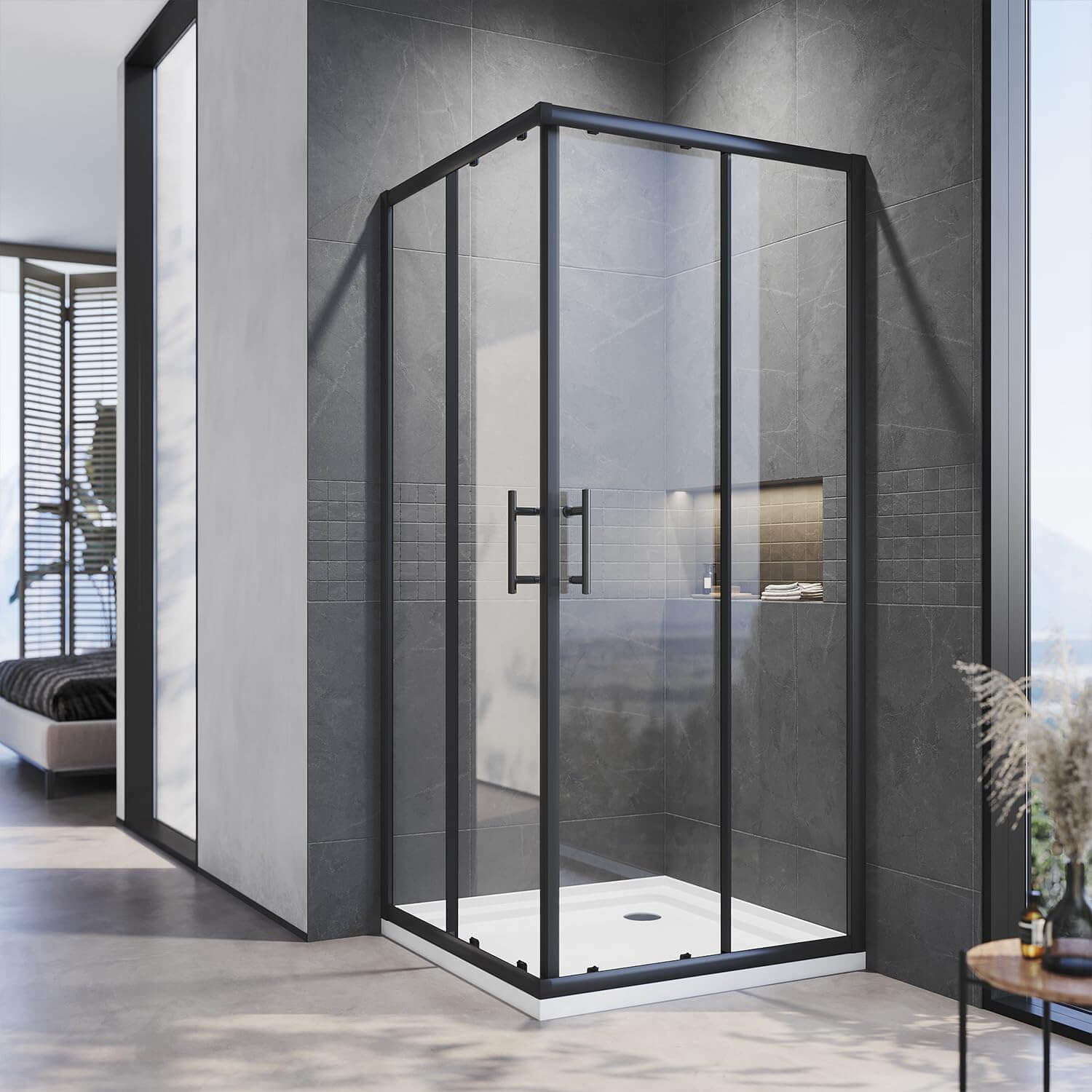The Australian love affair with open-plan living is evolving, and it’s seamlessly flowing into our most private spaces: the bathroom. Gone are the days of cramped, segregated bathrooms. Today, homeowners are seeking spa-like sanctuaries that are both beautiful and functional. At the forefront of this design revolution is the wet room. But is this sleek, minimalist trend a practical and luxurious upgrade, or a potential water-logged headache for your Australian home? This comprehensive guide will dive deep into everything you need to know about wet room design, installation, and cost, helping you decide if this modern bathroom solution is the perfect fit for your lifestyle and your property.
What is a Wet Room? Defining the Seamless Shower Space
At its simplest, a wet room is a fully waterproofed (or 'tanked') bathroom where the entire space functions as a shower area. Unlike a traditional bathroom, there is no separate shower enclosure, tray, or curb to step over. The shower area is seamlessly integrated into the room, creating a clean, open, and continuous flow. The entire floor is gently sloped towards a drain, meaning the whole room is designed to get wet. This walk-in shower concept is the epitome of modern, minimalist bathroom design.
Key Components of a Wet Room System
Understanding the mechanics is crucial to appreciating a wet room’s value. Three core elements make it work:
-
Waterproof Tanking: This is the non-negotiable foundation. The entire floor and walls (up to a specified height) are coated with a specialist waterproof membrane (a 'tanking' system). This barrier prevents water from seeping into the floor struNancy Wangcture or adjacent walls, protecting your home from serious water damage.
-
The Wet Room Floor: The floor is installed with a slight, often imperceptible, gradient (known as a 'fall') that directs all water towards the drain. This ensures no pooling or standing water.
-
The Wet Room Drain: The drain is a key feature, not just a functional element. Modern wet room drainage often includes sleek linear drains, which can be positioned against a wall or across the room, becoming a distinct design statement.
Wet Room vs. Standard Shower: Understanding the Fundamental Differences
It’s easy to confuse a wet room with a large walk-in shower, but key differences set them apart. Here’s a clear breakdown:
| Feature | Wet Room | Standard Shower |
|---|---|---|
| Enclosure | Open-plan, may have a single frameless glass screen or none at all. | Enclosed by walls and a shower screen or door. |
| Floor Access | Level-access, zero-threshold, flush entry. | Requires a step over a shower tray or hob. |
| Waterproofing | The entire room is tanked (floor and walls). | Only the shower recess is fully waterproofed. |
| Drainage | The drain handles water from the entire room; a central design feature. | The drain is discreetly placed within the shower base. |
| Spatial Feel | Creates a sense of spaciousness and luxury. |
Can feel more confined and segmented. |
Key Considerations for Your Australian Wet Room
Transforming your bathroom into a wet room is more than just a stylistic choice; it's a technical undertaking that demands careful planning. For Australian homes, specific factors like climate, building standards, and lifestyle come into play. Getting these core elements right is the difference between a flawless, luxurious sanctuary and a costly, problematic build.
Getting the Wet Room Drainage Perfect
The drainage system is the unsung hero of a successful wet room. It's not just about removing water; it's about doing so efficiently and invisibly.
-
Linear Drains vs. Point Drains: This is a fundamental choice. Linear drains are long, narrow channels that can be placed against a wall, across the centre of the room, or in a custom layout. They are highly effective at managing large volumes of water quickly and have become a signature feature in modern wet room design. Point drains (or round/square outlet drains) are more traditional and discreet but require a more complex, multi-directional floor slope (a 'fall') to funnel water towards a single point. For larger wet rooms or those with a specific minimalist aesthetic, linear drains are often the superior choice.
-
The Critical Floor Slope (Fall): The entire wet room floor must have a gentle gradient towards the drain. The Australian Standard (AS 3740) recommends a minimum fall of 1:100 (that's a 1cm drop for every 1 metre of distance). Achieving this requires expert skill from your screeder. Too steep a slope, and it will be noticeable and uncomfortable underfoot. Too shallow, and you'll end up with pooling water, defeating the purpose of the wet room and creating a safety hazard. The placement of the drain is calculated first, with the entire floor slope radiating out from it.
Choosing the Right Wet Room Tiles for Safety and Style
Your choice of tiles impacts both the safety and the longevity of your wet room.
-
Floor Tiles: The Non-Negotiable Need for Grip: Safety is paramount. Always specify non-slip floor tiles for the wet area, ideally with a high slip-resistance rating (look for an 'R' rating of R10 or higher, especially for residential applications). Textured, matte, or honed finishes provide much better grip under wet conditions than high-gloss polished tiles. Don't just rely on looks—test samples with water before you buy.
-
Size and Format Matter: Large-format tiles are highly recommended for wet rooms. They not only enhance the seamless, minimalist look but also significantly reduce the number of grout lines. Fewer grout lines mean fewer potential entry points for water and less area for mould and mildew to develop, simplifying your wet room maintenance.
-
Grout is Your Best Friend (or Worst Enemy): Use a high-quality, flexible, epoxy or polymer-modified grout. These types are far more resistant to water, mould, and staining than standard cement-based grout. Ensuring grout is applied evenly and sealed properly (if required) is a critical step in protecting the waterproof membrane beneath.
Ventilation is Non-Negotiable in the Australian Climate
The humid, coastal climate of many Australian regions makes ventilation an absolute priority, not an optional extra.
-
Preventing Mould and Moisture Damage: Even with perfect wet room waterproofing, steam and moisture will permeate the air. Without adequate ventilation, this moisture will settle on walls, ceilings, and fixtures, leading to peeling paint, warped cabinetry, and persistent mould growth. A powerful exhaust fan is essential to expel this moisture-laden air directly outside.
-
Sizing and Placement of Your Exhaust Fan: Don't just install any fan. It needs to be powerful enough for the volume of your bathroom. Calculate the room's cubic metre volume and choose a fan with a suitable extraction rate (litres per second). For a wet room, it's often wise to invest in a more powerful model than you think you need. Place the fan either in the centre of the room or between the shower area and the doorway to best capture the steam. Consider a fan with a humidistat that automatically turns on when moisture levels rise.
The Paramount Importance of a Certified Waterproofer
This is the single most important decision you will make in your wet room renovation.
-
Why Specialisation Matters: Wet room waterproofing is a specialist field. A general handyman or even a skilled tiler may not possess the specific training and experience to correctly install the complex tanking systems required. Any pinprick, poorly sealed corner, or inadequately prepared surface in the membrane can lead to failure.
-
The "Golden Ticket": Licences and Warranties: In Australia, waterproofing is a licensed trade. Always:
-
Ask for their Licence Number and verify it with your state's relevant building authority.
-
Request Details of their Warranty: A reputable licensed waterproofer will provide a robust warranty for their work, often for 6-10 years or more. This warranty should be provided in writing and be separate from your builder's contract. This is your primary protection against future leaks and the devastating damage they can cause.
-
Check Reviews and Past Work: Look for a professional with a proven portfolio of successful wet room installations. Don't be afraid to ask for references.
-
By giving these four areas the meticulous attention they deserve, you are not just building a bathroom; you are investing in a durable, safe, and beautiful space that will serve your home flawlessly for years to come.
Conclusion: Is a Wet Room the Right Choice for Your Home?
The decision to install a wet room in your Australian home is a significant one. On one hand, it offers an unrivalled blend of sleek modern bathroom design, enhanced accessibility, and a spacious, luxurious feel. On the other, it demands a substantial investment, meticulous planning, and, most critically, flawless execution by certified professionals.
Ultimately, a wet room is the right choice if you value cutting-edge design, are planning for the long term, and have the budget to invest in quality workmanship. It’s a transformation that turns an everyday bathroom into a stunning, functional, and future-proof sanctuary.
Ready to Take the Next Step? Navigating the intricacies of wet room design, drainage, and waterproofing can be complex. If you're inspired by the potential of a wet room but want to ensure it's executed perfectly for your home, the experts at Elegant Showers are here to help.
We invite you to visit our website at https://www.elegantshowers.com.au/ to explore our gallery of successful wet room shower solutions and discover how our professional consultation can bring your vision to life. Let us help you weigh the pros and cons with your specific space and budget in mind, ensuring your Australian wet room is not only beautiful but built to last.



